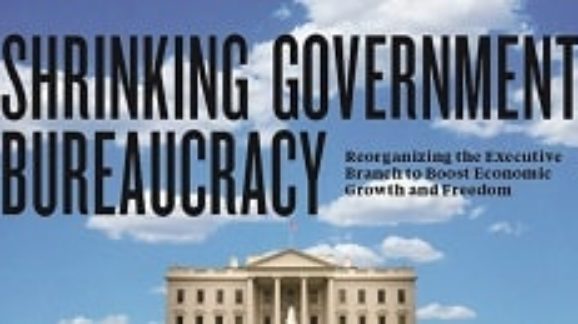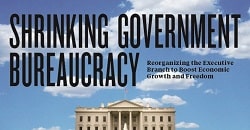Shrinking Government Bureaucracy in Turbulent Times

The following is an introduction to CEI’s latest research publication, Shrinking Government Bureaucracy: Ideas for Reform and Reinvention.
 If there were ever book federal agency managers should read, it is Peter Drucker’s Managing in Turbulent Times. With his signature clarity, Drucker tackles how to adapt to widespread social changes and make sound management decisions. It was published in 1980, when new currencies, new institutions, and major demographic changes were driving a revolution in our political culture.
If there were ever book federal agency managers should read, it is Peter Drucker’s Managing in Turbulent Times. With his signature clarity, Drucker tackles how to adapt to widespread social changes and make sound management decisions. It was published in 1980, when new currencies, new institutions, and major demographic changes were driving a revolution in our political culture.
One could be forgiven for hearing an echo today. Consider the collision of emergent cryptocurrencies with persistent society-wide cybersecurity vulnerabilities. Think of the revolutionary changes in the past two decades in communications, transportation, electronic payments, and medicine. We are witnessing a social redefinition of the meaning of work.
All of this dramatic change is taking place in spite of the largest, most sclerotic, regulatory burden ever created in the history of governments. Today, the federal government regulates and manages its way toward more than a $1.9 trillion economic burden on the American economy.
Drucker demands that the responsive, adaptive manager ask the following:
“If we weren’t in this already, would we go into it knowing what we now know?” And if the answer is “No,” one does not say: “Let’s make another study.” One says: “How can we get out; or at least, how can we stop putting additional resources in?”
That is good advice for policy makers. So it is a welcome development that the Office of Management and Budget, pursuant to an early 2017 executive order, has asked for public comment on how to restructure the executive branch and various regulatory agencies.
The federal government’s multitudes of offices, boards, commissions, and agencies are not at all organized and surely not suited to the task of responsible government. A description of executive branch growth from a similar government exercise in 1937 remains relevant:
The Executive Branch of the Government of the United States has thus grown up without a plan or design like barns, shacks, silos, tool sheds, and garages of an old farm. To look at it now, no one would ever recognize the structure which the founding fathers erected a century and a half ago to be the Government of the United States.
Neither clarity nor efficiency in government has improved in the past eight decades. In fact, one could say today’s executive branch looks less like a barn and more like the metaphorical manure piled inside. It is long past time for to claim a shovel and start digging.
To aid that effort, CEI scholars are contributing to the discussion in our areas of expertise. In this series of brief policy proposals, we put forth reform ideas linked to specific regulatory agencies.
In the following Web Memos, CEI experts argue for significant changes to the Depression-era Federal Deposit Insurance Corporation and to drastically shrink the remit of the 21st century Consumer Financial Protection Bureau. From recommendations on how to properly scope the Environmental Protection Agency and Federal Communications Commission to bringing a sense of order to the sprawling Department of Commerce, to rethinking the functions of the Securities and Exchange Commission and National Labor Relations Board, we propose concrete and readily implementable ideas. There is much more work left to do, but it is a good start.
Organizational change is hard. It requires adjusting the expectations and behaviors of an entire ecosystem of people—from employees to customers to vendors. Perhaps the hardest change of all is in government organizations. But it is not impossible.
The political scientist Charles Lindblom developed an analytical framework for “muddling through,” in which practitioners make successive, limited comparisons among alternatives and to move forward with a “good enough” alternative.
With respect to regulatory agencies, we have reached the point at which nearly any effort to streamline is an improvement. All that is required, as Drucker would put it, is to stop putting additional resources into agencies we would not choose to create if they were not there already. Given the scope of economic regulation in American life, even incremental improvements to the structure of government offer outsized benefits for liberty and growth.
Often, the essential question is not how we would run the government better. Rather, we need to ponder what the executive branch we deserve looks like and how it aligns with our Constitution and statutory limitations. The concrete suggestions found in these Web Memos provide a good start toward answering that question.